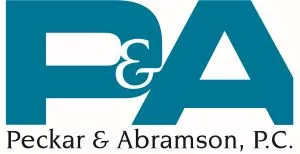- within Compliance topic(s)
Some significant changes are being made by chapter amendments (S.838 and A.984) to Section 220-i of New York's Labor Law. Contractors and subcontractors bidding on public contracts and performing work on covered private projects will have two years (by December 30, 2024) to register with the Department of Labor, Bureau of Public Works, rather than one year. The amendments also remove the requirement that a contractor submit registration certificates for all its subcontractors at the time its bid is submitted; amend language with respect to notice and hearing requirements; require re-registration to occur not less than 90 days before expiration; and add language to require a monitor to oversee ongoing work if a contractor or subcontractor is found unfit.
The stated purpose of the law is to help enforce New York's prevailing wage and other worker protection laws. The DOL will create an online system through which contractors and subcontractors will have to answer questions and submit documents about:
- the business entity and its owners and officers
- unemployment and workers' compensation insurance
- any outstanding wage assessments
- debarment under New York or federal law, or any other state's laws
- final determinations of a violation of any labor laws, employment tax laws, or workplace safety standards (including OSHA)
- association or signatory to an apprenticeship program
If the DOL approves the submission, the contractor will receive a registration certificate that remains valid for two years.
The chapter amendments include new details about the process for determining a contractor or subcontractor to be “unfit to be registered.” The DOL will be required to notify the contractor or subcontractor of the reasons for the proposed determination before it is finalized and “an opportunity to cure or be heard prior to the determination.”
The text still offers little guidance regarding grounds for the DOL's denial. The law provides that any unfit determination must be based on “clearly documented history, official record of past dealings, or a present demonstrable inability to lawfully adhere to the obligations and responsibilities.” Given the information that is being requested of contractors and subcontractors, the DOL is likely to feel empowered to examine a wide range of labor related issues, including safety records.
The amendments still provide that registration can be revoked or suspended upon a final determination of a violation of prevailing wage requirements, however the contractor or subcontractor shall be afforded an opportunity to be heard prior to revocation or suspension.
Notably, the law states that a contractor shall not be deemed unfit solely because of debarment in the last 8 years (rather than 10 years as the law was originally drafted), unless still debarred or otherwise ineligible under a labor law at the time of seeking registration. The law refers to debarment, not to a finding of non-responsibility, although it is unclear as to whether the DOL will appreciate the difference between debarment and a non-responsibility finding. We will have to see the practical implications of this new law, but the DOL should not be allowed to use this new law as a means of debarring contractors for grounds beyond what is already allowed under the Labor Law.
A potentially troubling aspect of the amendments is the new ability of the DOL to impose monitors. The amendments provide that if a contractor or subcontractor is determined unfit while performing contracted work on a covered project, it may only continue to work “if a monitor is appointed to oversee the work completed at the sole expense of such contractor or subcontractor.” The law does not state how long such a monitor can be required, but logically it should not extend beyond the project duration.
When bidding on a contract for public work, a contractor must submit its own registration certificate. It will be the contractor's responsibility to ensure that its subcontractors are registered before they begin working, but registration certificates for subcontractors will not be required to be submitted at bid time. For covered projects performed under private contract, the owner or developer must ensure that the contractor and all subcontractors are properly registered. The lapse of a registration will not prohibit a contractor or subcontractor from completing their work on a covered project.
Covered private projects are defined to be those covered by Labor Law Section 224-a (paid for in whole or in part out of public funds where the amount of all such public funds, when aggregated, is at least thirty percent of the total construction project costs and the project costs are over five million dollars) and Labor Law Section 224-d (renewable energy projects procured with public credits).
The law also provides for a $1,000 penalty, after notice and hearing, against any unregistered contractor who submits a bid on a contract for public work, and for any contractor who allows an unregistered subcontractor to commence work on a covered project; and, against any owner or developer on a covered project that commences work under a private contract, using any contractor or subcontractor they knew or should have known were unregistered.
How this new law will do anything better than the multiple legal protections that already exist for workers and public entities, including through other registration systems such as the New York State Vendor Responsibility System, is unclear. And there may be challenges to its scope. The law also may create a prequalification type process prohibited by New York's competitive bidding laws, and be incompatible with design-build procurement methods.
The content of this article is intended to provide a general guide to the subject matter. Specialist advice should be sought about your specific circumstances.
[View Source]



